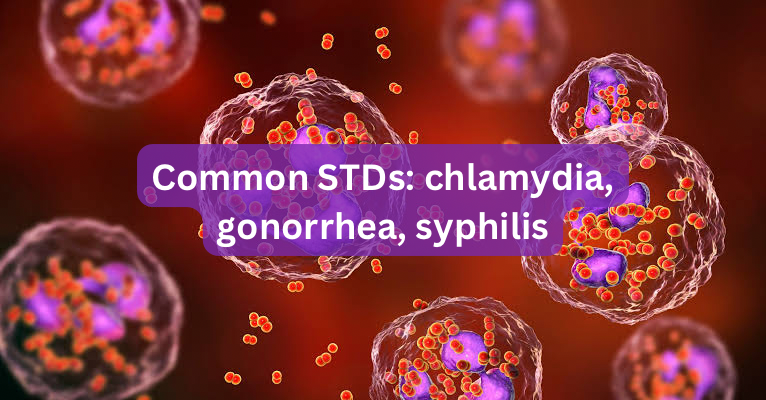Common STDs: chlamydia, gonorrhea, syphilis

S*xually transmitted diseases (STDs) are a common public health issue that affects millions of people worldwide. In this blog post, we will discuss three of the most common STDs: chlamydia, gonorrhea, and syphilis. We will delve into the causes, symptoms, and treatments of each of these infections in detail.
1. Chlamydia
Chlamydia is a bacterial infection that can be transmitted through vaginal, anal, or oral s*x. It is one of the most common STDs, particularly among young people. Many people with chlamydia do not experience any symptoms, which is why it is often called the “silent” infection. However, when symptoms do occur, they can include:
- Painful urination
- Abnormal vaginal discharge (women)
- Painful s*x (women)
- Pain or swelling in the testicles (men)
- Discharge from the p£nis (men)
Chlamydia is treated with antibiotics, which can cure the infection if taken as directed. It is important to get tested regularly if you are s*xually active, an untreated chlamydia can lead to serious health problems, such as pelvic inflammatory disease (PID) and infertility.
Read also: Causes Of Infertility In Men.
2. Gonorrhea
Gonorrhea is a bacterial infection that can be transmitted through vaginal, anal, or oral s*x. It is also a common STD, particularly among young people. Symptoms of gonorrhea can include:
- Painful urination
- Abnormal vaginal or penile discharge
- Painful bowel movements
- Pain or swelling in the testicles (men)
- Sore throat (from oral s*x)
Like chlamydia, many people with gonorrhea do not experience any symptoms.
Gonorrhea is also treated with antibiotics. However, in recent years, there has been a rise in antibiotic-resistant strains of gonorrhea, which makes treatment more challenging. This is why it is important to get tested regularly and to practice safe Intercourse.
3. Syphilis
Syphilis is a bacterial infection that can be transmitted through vaginal, anal, or oral s*x. It is a serious infection that can have long-term health consequences if left untreated. Syphilis progresses through stages, and symptoms can vary depending on the stage of the infection. The stages of syphilis are:
- Primary stage: This is marked by the appearance of a sore (called a chancre) at the site of infection. The sore is usually painless and may go unnoticed.
- Secondary stage: This is marked by a rash that can appear all over the body, as well as other symptoms such as fever, swollen lymph nodes, and sore throat.
- Latent stage: This is when there are no visible symptoms of syphilis, but the infection is still present in the body.
- Tertiary stage: This is the most serious stage of syphilis, and can lead to serious health problems such as heart disease, blindness, and dementia.
Syphilis is also treated with antibiotics, but it is important to get tested early, as the infection can cause irreversible damage if left untreated.
Preventing the spread of STDs
Read also: Prevention Methods For STDs. The best way to prevent the spread of STDs is to practice safe s*x. This means using a condom or dental dam during vaginal, anal, or oral s*x. It is also important to get tested regularly if you are s*xually active.







